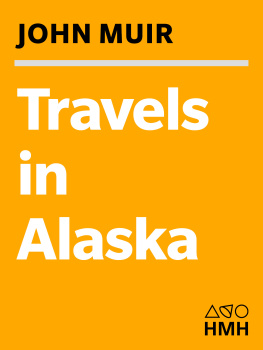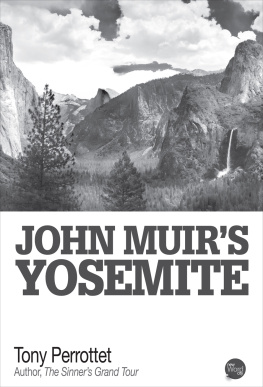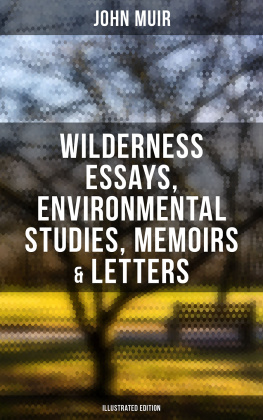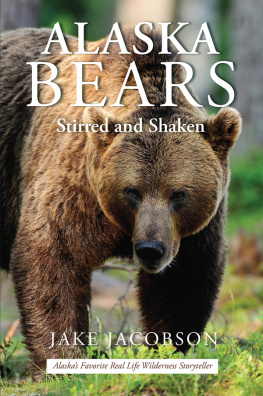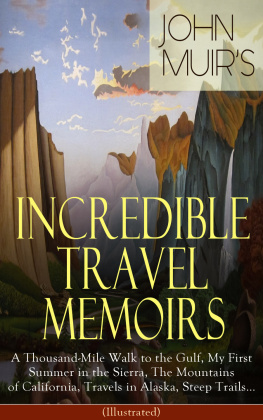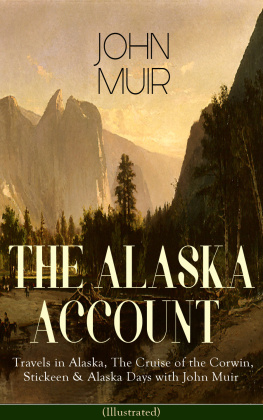Muir John - Travels in Alaska
Here you can read online Muir John - Travels in Alaska full text of the book (entire story) in english for free. Download pdf and epub, get meaning, cover and reviews about this ebook. City: Alaska;Ashland;Or;United States, year: 1996, publisher: Houghton Mifflin Harcourt;Blackstone Audio, genre: Romance novel. Description of the work, (preface) as well as reviews are available. Best literature library LitArk.com created for fans of good reading and offers a wide selection of genres:
Romance novel
Science fiction
Adventure
Detective
Science
History
Home and family
Prose
Art
Politics
Computer
Non-fiction
Religion
Business
Children
Humor
Choose a favorite category and find really read worthwhile books. Enjoy immersion in the world of imagination, feel the emotions of the characters or learn something new for yourself, make an fascinating discovery.
- Book:Travels in Alaska
- Author:
- Publisher:Houghton Mifflin Harcourt;Blackstone Audio
- Genre:
- Year:1996
- City:Alaska;Ashland;Or;United States
- Rating:5 / 5
- Favourites:Add to favourites
- Your mark:
- 100
- 1
- 2
- 3
- 4
- 5
Travels in Alaska: summary, description and annotation
We offer to read an annotation, description, summary or preface (depends on what the author of the book "Travels in Alaska" wrote himself). If you haven't found the necessary information about the book — write in the comments, we will try to find it.
Travels in Alaska — read online for free the complete book (whole text) full work
Below is the text of the book, divided by pages. System saving the place of the last page read, allows you to conveniently read the book "Travels in Alaska" online for free, without having to search again every time where you left off. Put a bookmark, and you can go to the page where you finished reading at any time.
Font size:
Interval:
Bookmark:
Copyright 1915 by Houghton Mifflin Company
Introduction copyright 1979 by Edwin Way Teale
Foreword copyright 1998 by David Rains Wallace
All rights reserved
For information about permission to reproduce selections from this book, write to or to Permissions, Houghton Mifflin Harcourt Publishing Company, 3 Park Avenue, 19th Floor, New York, New York 10016.
www.hmhco.com
The Library of Congress has cataloged the print edition as follows:
Muir, John, 18381914.
Travels in Alaska / John Muir; introduction by Edwin Way Teale ; foreword by David Rains Wallace.
p. cm.
A Mariner book.
Originally published: Boston : Houghton Mifflin, 1915. With new foreword.
Includes index.
ISBN 0-395-90148-0
1. Muir, John, 18381914JourneysAlaska. 2. AlaskaDescription and travel18671896. 3. ConservationistsUnited StatesBiography. 4. NaturalistsUnited StatesBiography. I. Title. [QH31.M9A3 1998]
917.9804'3dc21 98-11911
e ISBN 978-0-547-56167-7
v1.1015
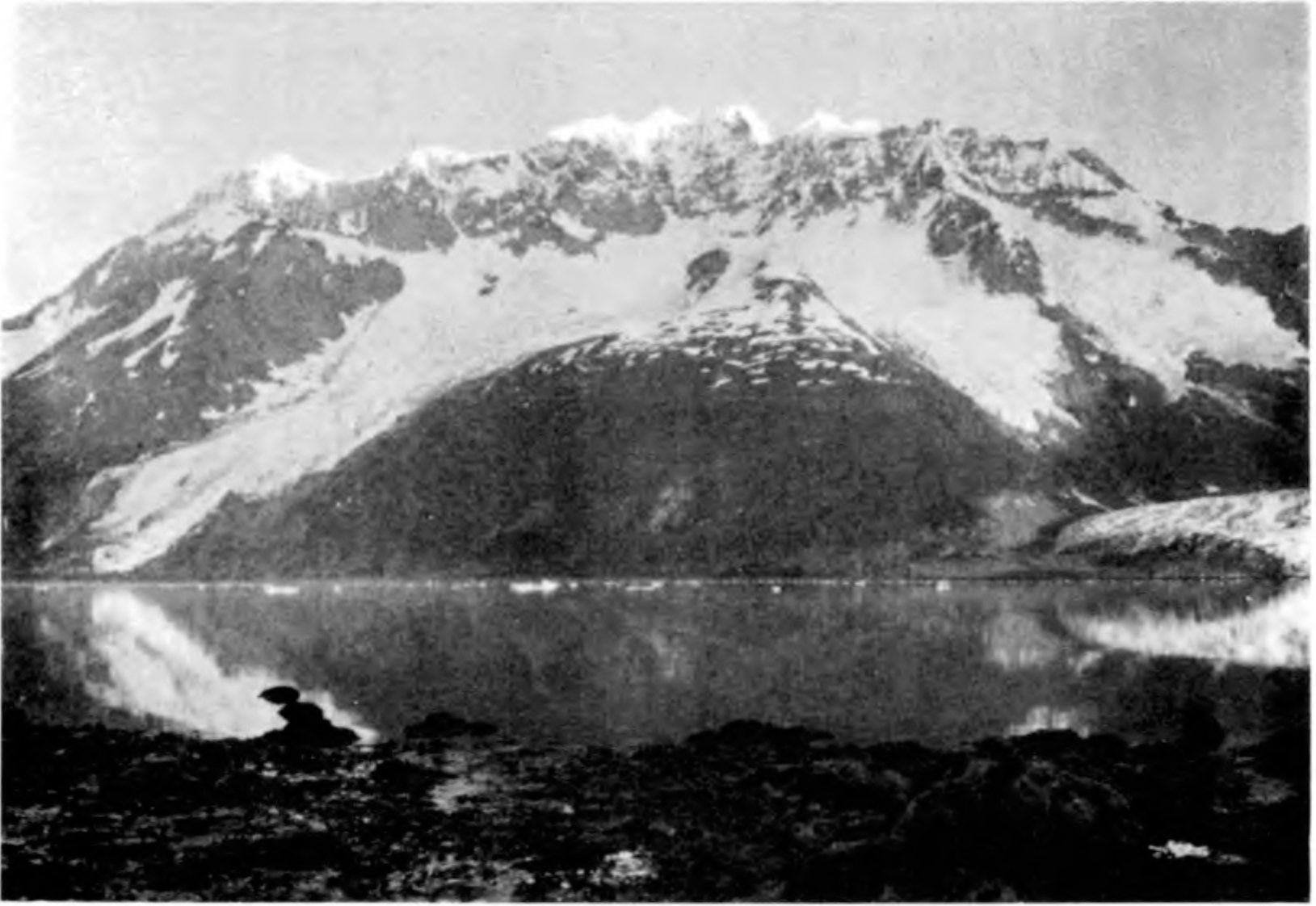
ALPENGLOW ON SUMMIT OF MT. MUIR, HARRISON FIORD, PRINCE WILLIAM SOUND
John Muirs trips to southeast Alaska in 1879 and 1880 were the culmination of his career as a naturalist. He was an unusual one for the late nineteenth century. A severe Scottish Calvinist upbringing had pressed an indelible belief in God into his mind by the time he immigrated to America with his family in 1849 at age ten. When he later rejected his fathers biblical Fundamentalism, his life became a search for God in nature, a pursuit in which he resembled much earlier naturalists such as John Ray and William Bartram more than his contemporaries. Victorian-era professionals like the botanist Asa Gray, an acquaintance of Muirs, studied various aspects of nature as a way of understanding their workings. Muir did too, of course, but his main mission was to contemplate all nature as a witness to divine creation.
Muirs understanding of nature was far from archaic, however. He was a consummate observer and interpreter, and a hard youth on the Wisconsin frontier had made him an extraordinarily resourceful explorer. He thus was able to study the remote phenomena that some of his more professional colleagues only theorized about. Glaciers are an example. When Muir was exploring Californias Sierra Nevada as a young man in the 1860s and 70s, the Harvard professor Louis Agassizs idea that ice had covered much of the earth in the relatively recent past was still revolutionary. The California State Geological Survey leader Josiah D. Whitney called the young mountaineer an ignoramus for maintaining that ice had formed the Sierras spectacular high country, but Muir proved it. He walked the entire range with little more than sacks of bread and blankets (wearing a three-piece suit and a necktie!), found evidence of huge vanished glaciers throughout the valleys, and followed them upward to small existing glaciers in the shadows of the peaks. These would have been gratifying scientific discoveries for anyone. To Muir they were also religious revelations. Glaciers were spiritual beings, angelic crystal rivers sculpting the rocks into a home for life. To find them was to witness God in the act of never-ending creation.
Yet California in 1879 was receding from the revelations Muir sought, its remnant glaciers melting, its forests and meadows logged and grazed. He longed for a greater vision, and Alaskaacquired by the United States only twelve years beforeoffered the closest thing available to this penniless forty-one-year-old on the verge of marriage and other responsibilities. Coming to America so relatively late, as Frederick Turner wrote in his 1985 biography, Rediscovering America, he had missed much of that primitive splendor that predecessors like Bartram... had beheldand that was in fact passing away even as they breathlessly beheld it. Now he was given that kind of chance again by an odd turn of American history, Sewards folly. Here again, and for a last time, was the great soaring wilderness... He plunged into it as would one encountering the truth of a dream.
Even southeast Alaska was no longer pristine by 1879whaling, fur trading, and mining had impoverished it. Yet its giant spruce and hemlock forests remained largely intact, and its glaciers were so vast that all of Californias could have fit in a single one. This is a Yosemite Valley in process of formation, Muir wrote of the Stickeen fiord, the modeling and sculpturing of the walls nearly completed and well planted, but no groves as yet or gardens or meadows on the raw and unfinished bottom... No words can convey anything like an adequate conception of its sublime grandeurthe noble simplicity and fineness of the sculpture of the walls; their magnificent proportions, their cascades, gardens, and forest adornments; the placid fiord between them; the great blue and white ice wall, and the snow laden mountains beyond. Still more impotent are words in telling the peculiar awe one experiences in entering these mansions of the icy North.
Muir found creation still under way in phenomena such as kettles, deep pits in the rock and sand left by receding glaciers. All sorts of theories have been advanced for the formation of these kettles, he wrote of the Stickeen glacier. I discovered several kettles in the process of formation and was pleased to find that they conformed in the most striking way with the theories I had already been able to make from the old kettles which form so curious a feature of the drift covering Wisconsin and Minnesota and some of the larger moraines of the residual glaciers of the California Sierra. I found a pit eight or ten feet deep with raw shifting sides countersunk abruptly in the rough morainal material, and at the bottom, on sliding down by the aid of a lithe spruce tree that was being undermined, I discovered, after digging down a foot or two, that the bottom was resting on a block of solid blue ice that had been buried in the moraine perhaps a century or more, judging from the age of the tree that had grown above it. Muir was rightthe melting of buried ice blocks is indeed what forms kettles. I was glad to be able to set this question at rest, he wrote, at least as far as I was concerned.
Muirs Alaskan trips also were a culmination of the feats of exploration that helped make him famous. As Edwin Way Teale observed, Muir was not a thrill seekerthe exploits served his vocation as a naturalist. Nevertheless, his Alaska adventures make thrilling reading. Along with mountaineering, which hed perfected in California, they included two epic voyages. In 1879, he canoed an eight-hundred-mile loop from Wrangell Island in the south to Glacier Bay in the north, becoming one of the first white men to see the awesome glacial complex that flows into that bay, which had still lain under ice when the Vancouver expedition had been there a century earlier. Watching from the Pacific Glacier as sunrise turned the overhanging Fairweather Mountains to celestial fire, Muir wrote: The white, rayless light of morning, seen when I was alone among the peaks of the California Sierra, had always seemed to me the most telling of all the terrestrial manifestations of God. But here the mountains themselves were made divine. The next year he returned via a shorter voyage and walked for dozens of miles across the glaciers, spending one night trying to find his way through a maze of crevasses into any of which he could have disappeared forever. Never before had rocks and ice and trees seemed so beautiful and wonderful, he wrote of the following morning. Even the cold, biting rainstorm that was blowing seemed full of loving kindness.
The canoe voyages produced an unexpected revelation. Calvinism regarded fallen humanity as unworthy of God, and Muir remained Calvinist enough that he tended to view people as too petty and artificial for divine nature. His solitary, dangerous feats were partly a way of atoning for his own sense of unworthiness. On the voyages, however, he encountered people who were not quite like any hed known before. Dependent on the knowledge and skills of his Northwest Indian guides, he conceived an unusual admiration for them, particularly for a Tlingit named Toyatte, of whom he wrote: never under any circumstances did I ever see him do anything, or make a single gesture, that was not dignified. This admiration extended to the Tlingits generally, who, although decimated and demoralized by European contact, still maintained much of their traditional relationship with nature. Aware that Tlingit tradition also had included war, slavery, and accumulation of wealth, Muir still seems to have regarded them as more worthy of their land than any people he had met.
Font size:
Interval:
Bookmark:
Similar books «Travels in Alaska»
Look at similar books to Travels in Alaska. We have selected literature similar in name and meaning in the hope of providing readers with more options to find new, interesting, not yet read works.
Discussion, reviews of the book Travels in Alaska and just readers' own opinions. Leave your comments, write what you think about the work, its meaning or the main characters. Specify what exactly you liked and what you didn't like, and why you think so.

